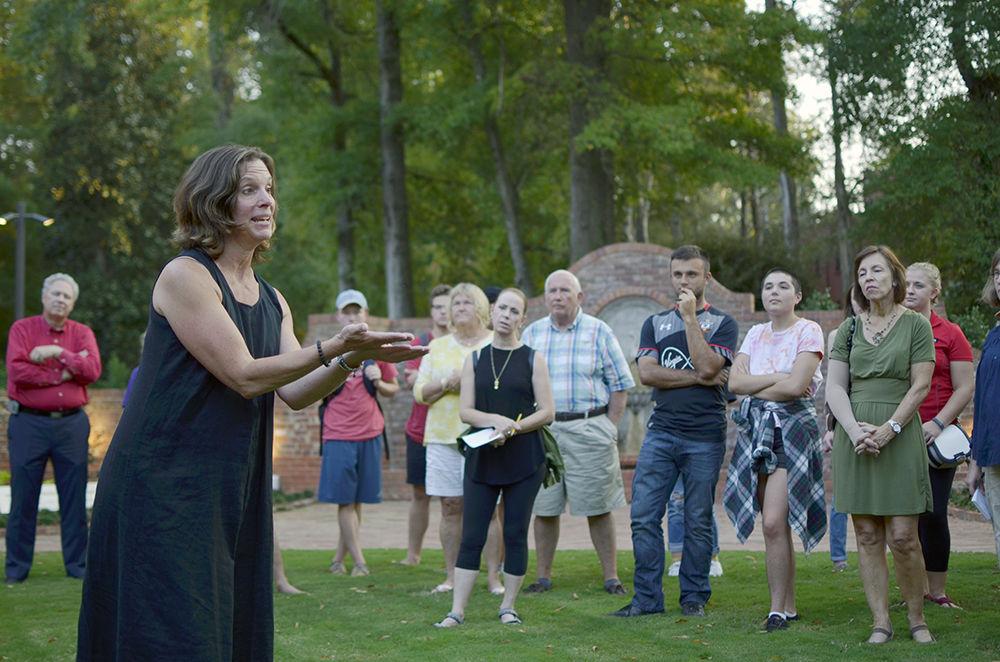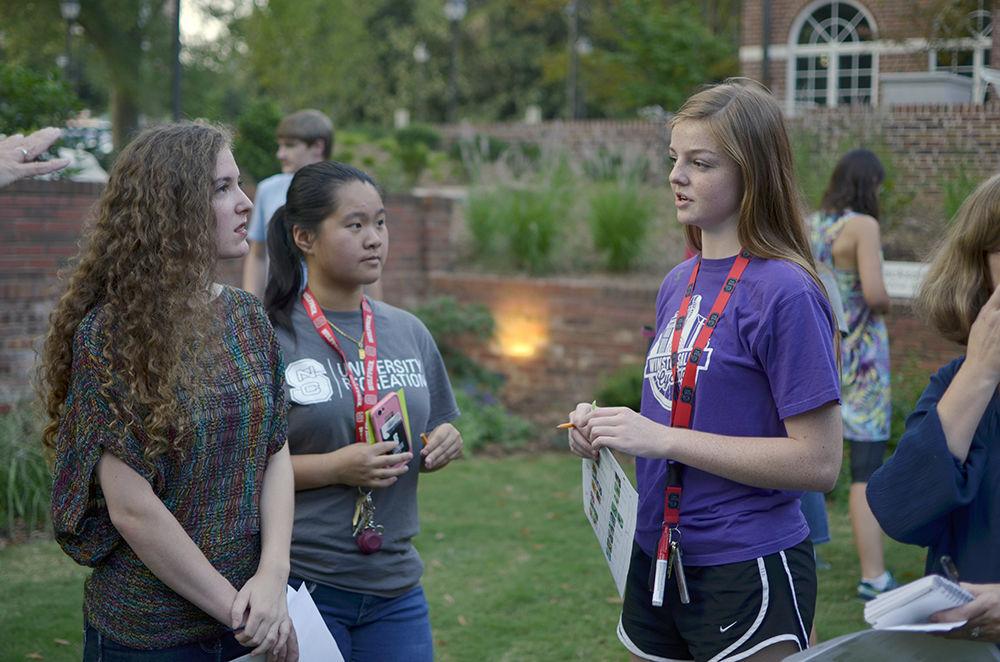On Thursday, the Gregg Museum of Art and Design hosted an educational walk-through talk entitled “The Bees’ Needs,” during which Anne Spafford, associate professor of landscape design in the Department of Horticultural Science, discussed the importance of varying aesthetic and functional elements of pollinator gardens, specifically for native bee species.
In the Gregg’s five-month old Jackson-Thiem Garden, Spafford took a casual approach with attendees as the group moved throughout the garden, examining the variety of plant species and asking the professor pollinator and gardening questions. Spafford explained that a critical element in pollinator gardens is plant diversity, which serves to elongate bloom time from spring to frost and provide pollinators with appropriate nutrient content.
“There has to be a lot of plant diversity,” Spafford said. “Many kinds, many different sizes of flowers, shapes of flowers. The different kinds really play into the fact that different kinds of pollen have different nutrient content. Just planting a few plant species is like going out and only eating cheeseburgers or salad. If that’s the only thing you eat, that’s still not going to be a very healthy thing.”
As the group ventured around the garden, Spafford pointed out how her students from last fall studied the site and made their own garden designs. The site had its difficulties, including shade issues, water drainage problems and low air movement, but her students, after approving one final design, managed to have the final product finished in April.
Pollinators, specifically the declining bee population of which there are over 500 species, serve not just to pollinate flowers, but to provide the community with food. In a separate interview with the Technician, Spafford commented on why pollinators are essential when it comes to getting food on the table.
“One in every three bites of food you eat requires pollination,” Spafford said. “They [NC State students] might not be interested in insects or gardens, but if they’re interested in eating, they need to be concerned about pollinators.”
Connor Fraley, a third-year studying political science and English, commented on how his perspective on gardening had changed since attending the event.
“Of all the Gregg Museum programs, this seemed like a really cool event to come to,” Fraley said. “When you see gardens, you don’t think about all the stuff that goes into them, but there’s so much more than you think.”
Spafford ended her talk with an engaging activity made by a former graduate student. The attendees were asked to take the student-made worksheet and look for a variety of pollinators, including native bees, butterflies and moths.
“In the garden, you can find up to seven pollinators on one plant alone,” Spafford said.
For Spafford, pollinator gardening should be easy and low-maintenance. By picking plants that are “as tough as nails,” gardeners should have little trouble keeping up with their pollinator gardens, and can find their beds appealing to the eye.
“We believe one plus one equals three,” Spafford said. “One cool plant and another cool plant leads to an outstanding combination. Gardening is super easy and jives with what we find attractive.”
Devin Wyatt, a first-year studying environmental engineering, networks with Sandy Lin and Zohara Scott at the Bees' Needs event at the Gregg Museum of Art and Design on Thursday.














